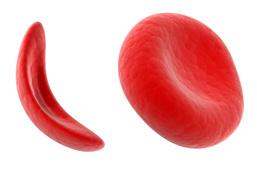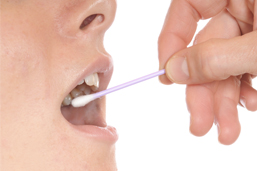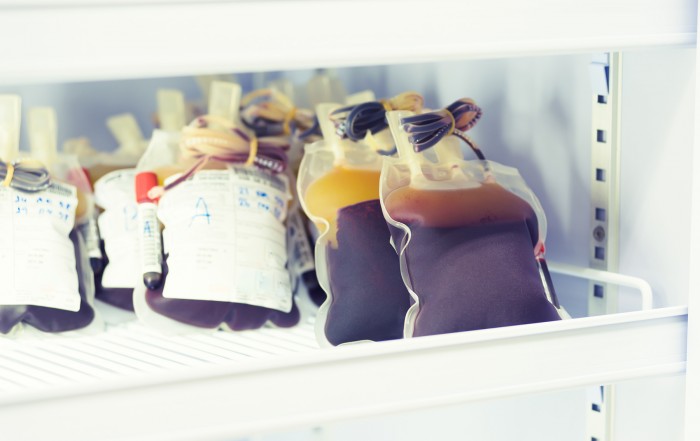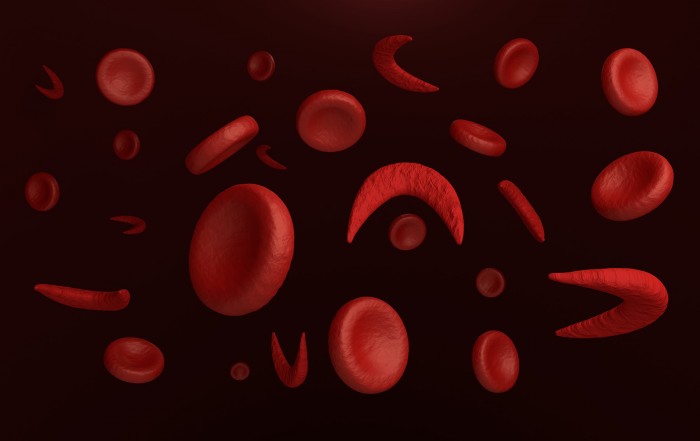Sickle Cell Disease (Hemoglobin S, C and E) Genotyping
Find out if you are at risk
- Sickle cell disease is a red blood cell disorder caused by abnormal hemoglobin
- Defects in the HBB gene result in the production of abnormal hemoglobin
- It is the most common inherited blood disorder in the US, affecting 90,000 to 100,000 Americans
- Simple mouth swab DNA test with results in 1 – 2 weeks
What is Sickle Cell Disease Genotyping?
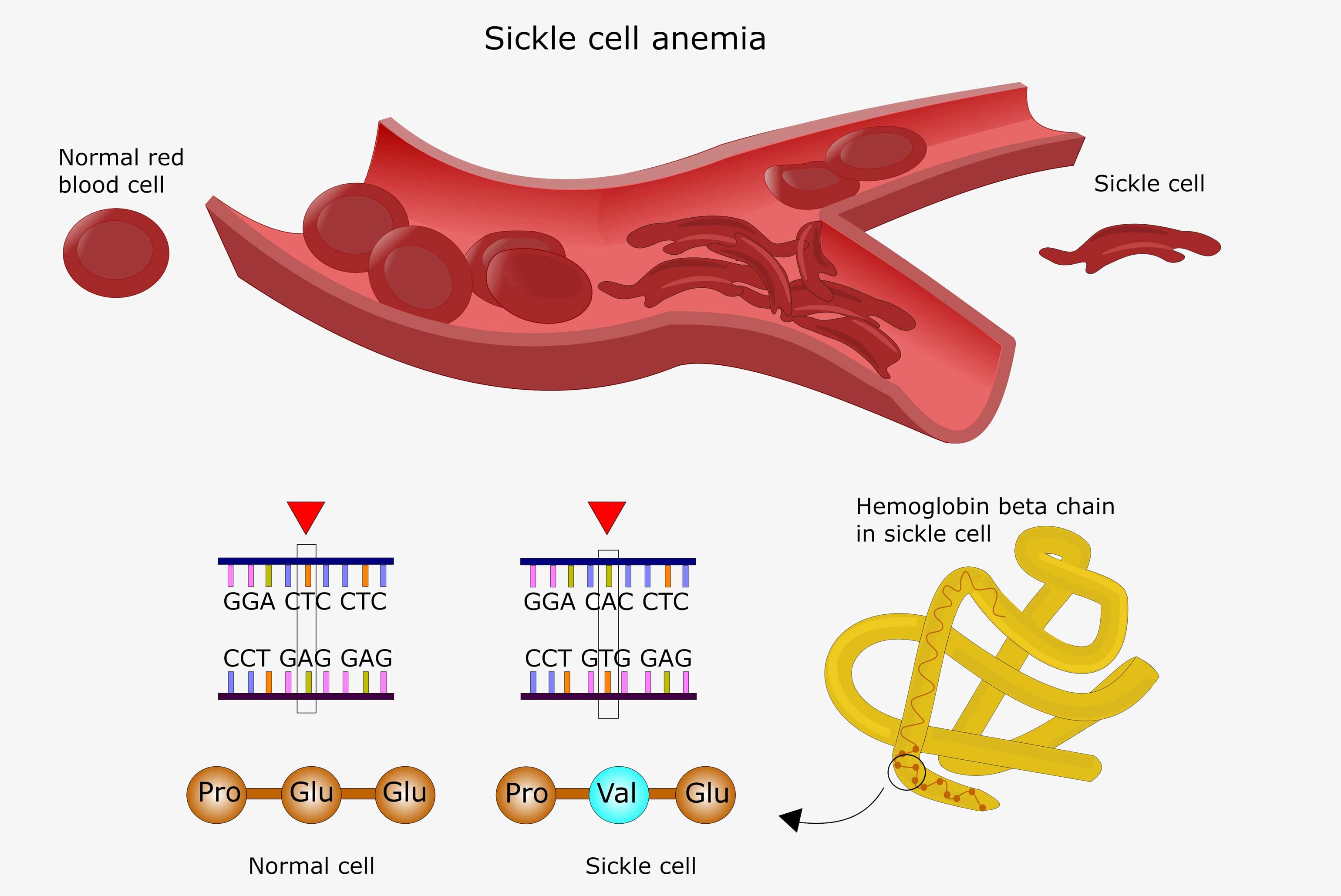
The HBB gene encodes the β-globin chain of hemoglobin, a protein found in red blood cells. Mutations in the this gene result in the production of abnormal hemoglobin and can lead to sickle cell disorders. Hemoglobin S, C and E are abnormal forms of hemoglobin that contribute to the characteristic sickle shape of red blood cells in people suffering from a sickle cell disorder. This test will determine if you have the genetic changes in the HBB gene that result in the production of hemoglobin S, C or E. Sickle cell disease is an autosomal recessive disorder, which means two defective copies of HBB are necessary to inherit the disease. There are different forms and severity of the sickle cell disorder, depending on which HBB mutations have been inherited:
- Hemoglobin SS disease or sickle cell anemia (HbSS) – This is the most common type of sickle cell disease and patients have sickle-shaped red blood cells. These individuals have inherited two defective copies of HBB that each encode for the abnormal hemoglobin S.
- Hemoglobin SC disease (HbSC) – Affected individuals have two defective copies of HBB, where one copy encodes hemoglobin S and the other encodes hemoglobin C. This is the second most common form of sickle cell disease. Symptoms are often (but not always) milder than those experienced by individuals with sickle cell anemia.
- Hemoglobin SE disease (HbSE) – Affected individuals have two defective copies of HBB, where one copy encodes hemoglobin S and the other encodes hemoglobin E. Symptoms are milder than those experienced by individuals with sickle cell anemia.
- Sickle cell trait (HbAS) – A condition where individuals have only one affected copy of HBB that encodes hemoglobin S. The other copy of HBB is normal and encodes for the normal hemoglobin A. These individuals generally do not show symptoms of the disorder.
Step-by-Step
The kit can be ordered online, by fax or mail, or by phone. Once you place the order, the testing kit will be shipped directly to you. The kit contains swabs called “buccal swabs”. DNA is collected quickly and easily by rubbing the swabs inside your mouth against the cheek for 30 seconds. Once the DNA is collected, the swabs are placed into the specimen container provided in the kit and returned to the laboratory for testing using the return package included in the testing kit. Once your samples arrive at the laboratory, testing begins immediately and results are available in 1 to 2 weeks.
The Types of Hemoglobinopathies Associated with HBB
Sickle Cell Anemia
Sickle cell anemia is the most severe form of the sickle cell disorders and can be fatal without treatment. Individuals with sickle cell anemia only produce hemoglobin S or sickle hemoglobin. This abnormal hemoglobin sticks together and results in the characteristic sickle shape of the red blood cells in affected individuals. Sickle cell anemia is characterized by:
Hemoglobin SC Disease
People with hemoglobin SC disease have inherited two defective copies of HBB. One copy encodes HbS (sickle hemoglobin) and the other copy encodes HbC. Hemoglobin SC is associated with less sickling than hemoglobin S, therefore these individuals will have fewer sickled red blood cells and generally experience milder symptoms. Hemoglobin SC disease is characterized by:
- Mild hemolytic anemia
- Splenomegaly
- Gallstones
- Jaundice
Hemoglobin SE Disease
People with hemoglobin SE disease have inherited two defective copies of HBB. One copy encodes HbS (sickle hemoglobin) and the other copy encodes HbE. Hemoglobin SE is associated with only mild symptoms. Hemoglobin SE disease is characterized by:
- Mild anemia
- Smaller, paler red blood cells
- Fatigue
- Growth delays
- Shortness of breath
- Jaundice
Frequently Asked Questions
Get Started
Sickle Cell Disease Learning Center
What is the treatment for Sickle Cell Disease?
Currently the only cure for sickle cell disease is a stem cell transplant. A stem cell transplant involves depletion of the affected bone marrow using radiotherapy or chemotherapy, and replacement with healthy donor stem cells [...]
How is Sickle Cell Disease diagnosed?
Sickle cell disease can be diagnosed through genetic testing and various blood tests. Genetic testing Genetic testing of the HBB gene can diagnose sickle cell disease. Three specific genetic mutations in the HBB gene, 20A>T, [...]
What are the signs and symptoms of Sickle Cell Disease?
The signs and symptoms of sickle cell disease typically first appear in early childhood. The severity of the symptoms depends on the type of sickle cell disease and varies between affected individuals. If left untreated, [...]

